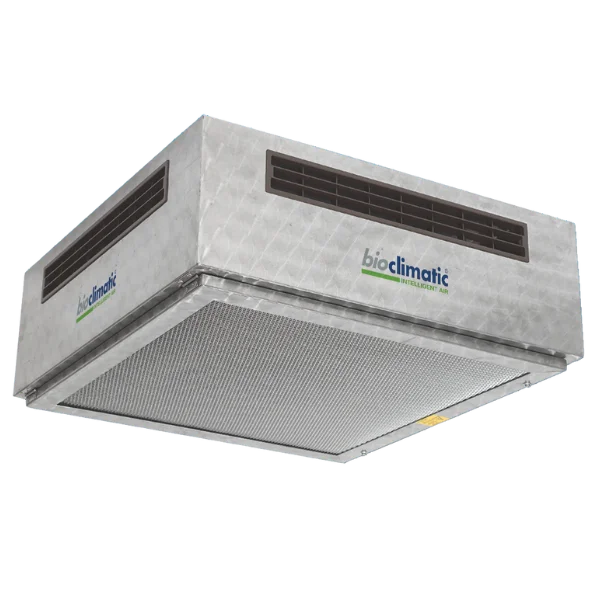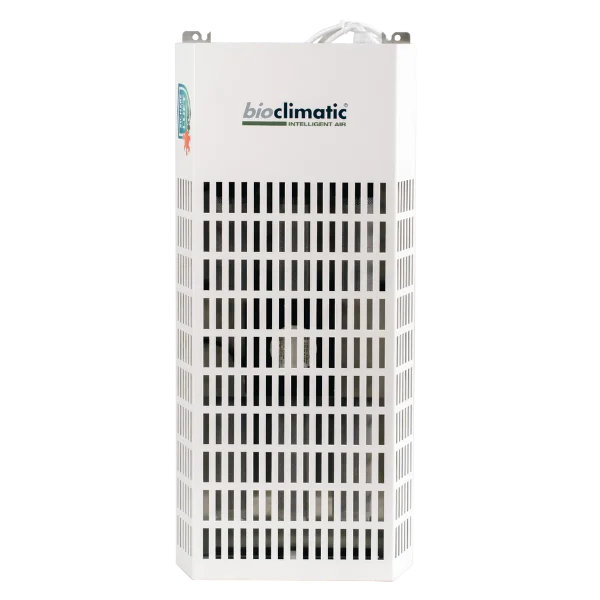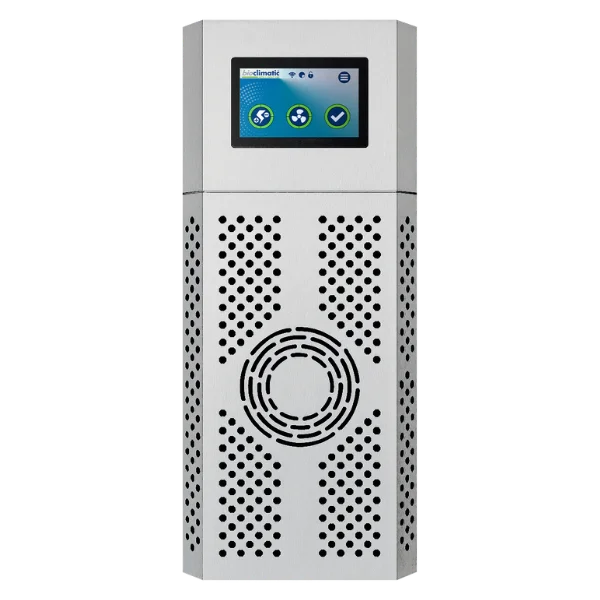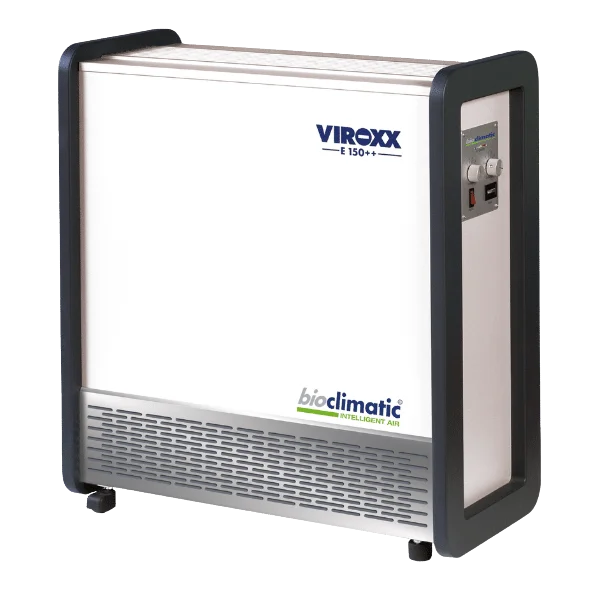Travel with us without worries – airport air purifiers
bioclimatic airport air purifiers inactivate pathogens, improve air quality and reduce infection and health risks.
Our airport air purifiers
Thousands of passengers travel through airports every day, using security checkpoints, lounges and conference rooms – often with poor ventilation. Good air quality is essential for comfort and protection against infection when traveling and working.
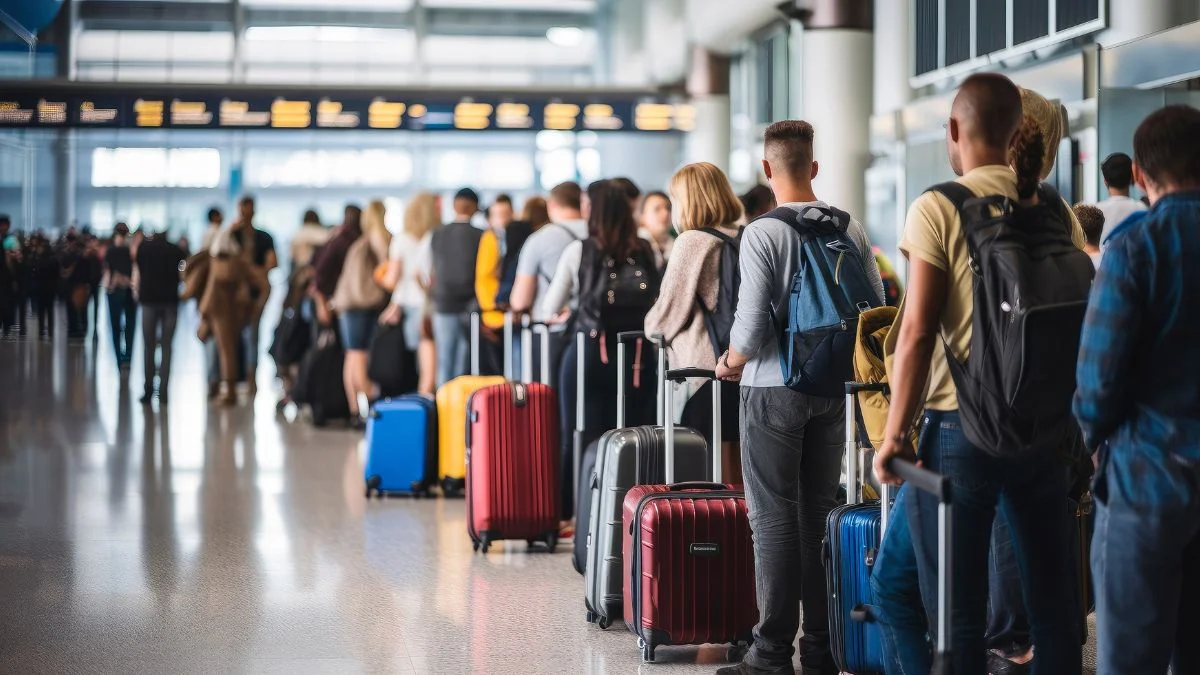
Advantages of our air purifiers
- Odour neutralization – Reduces unpleasant odours in waiting areas
- Illness protection – Reduces sick days through clean air
- Well-being – fresh air increases comfort and quality of life
- Germ reduction – Inactivates viruses, bacteria and mold spores
- Cost efficiency – no filter changes, low maintenance requirements
- Air hygiene – removes pollutants and improves air quality
- Infection protection – Reduces the risk of airborne diseases
- Retrofitting – quick integration without major conversions
- Pollutant reduction – Reduces emissions from aircraft and vehicles
- Health protection – Optimum air for passengers and staff
Good air at the airport
Good air at the airport is not an impossibility, because there are ways in which high-quality air purifiers can provide airports and passengers with purified air. The devices are able to reduce pollutants. In this way, they not only improve the air we breathe, but also minimize health risks to increase passenger safety.
AeroMat
AeroTec
AeroTec2
AeroTron
AirCleanerQ
Viroxx E150++
What our customers say








Interesting facts about our airport air purifiers
Air pollution at airports
Air pollution at airports is a complex issue that affects both travelers and airport staff. It can also have an impact on the entire airport infrastructure – as the coronavirus pandemic has shown us. However, the sources of air pollution at airports extend far beyond common viruses and bacteria.
Let’s think about the airplanes themselves. The engines of the aircraft emit exhaust gases containing carbon dioxide, nitrogen oxides, particulate matter and other harmful substances. During take-off and landing in particular, large quantities of these particles are released and accumulate in the surrounding area, leading to increased air pollution. However, ground vehicles also contribute to air pollution at the airport. This is because the engines in operation also produce harmful emissions, which
- Respiratory problems,
- Cardiovascular diseases
- and other health complaints
bring with them.
Indoor air quality
If we now take a look inside the airport building, there is a lot of public traffic and a lively atmosphere. Close contact in queues, crowded gates and shared spaces such as lounges and restaurants contribute to the easy spread of viruses and bacteria. There is an exchange or transmission of viruses or bacteria simply because many people come together in enclosed spaces. Another factor is volatile organic compounds (VOCs), which have an equally high negative impact on the air. They are released into the air we breathe as gaseous and invisible substances through evaporation. Such volatile compounds originate, for example, from
- building materials,
- cleaning agents,
- Fuels
- or baggage and freight,
They can cause irritation to the eyes, nose and respiratory tract in particular. The coronavirus pandemic has shown us what viruses and bacteria can do. We are now also aware of how quickly aerosols can spread and that thorough disinfection of all surfaces is unfortunately not enough.
All of these factors contribute to air pollution and pose considerable health risks. Not only people who spend a long time at the airport – such as employees, crew members and frequent flyers – are particularly at risk, but also people who only spend a short time at the airport, as they also breathe in the air and its impurities. Good air quality in these areas is therefore particularly important to reduce the risk of infection and protect the health and safety of travelers and airport staff. This is particularly relevant in places where a constant flow of people from different regions and countries come together.
Use of air purifiers at airports
Various measures are required to reduce air pollution. The introduction of more environmentally friendly aircraft engines, the use of electric ground vehicles and the implementation of better exhaust gas purification technologies are just some of the approaches. Investments in improving public transport links to the airport and promoting carpooling are also important steps towards reducing traffic and thus air pollution.
But all of this requires complex processes and long decision-making paths. It is easier to use air purifiers, which have proven to be an effective measure to improve air quality and protect the health of travelers and airport staff. This is necessary because there are many sources of air pollution:
- volatile organic compounds,
- Pollutants from aircraft engines and ground vehicles
- and the potential spread of viruses and bacteria in crowds.
For this reason, air purifiers have become a necessary addition to airport infrastructure. Modern air purifiers work with bipolar ionization, which allows them to effectively neutralize a wide range of pollutants, particles and microorganisms. Some high-performance filters (e.g. HEPA or UV-C) are capable of absorbing volatile organic compounds and odors or filtering the finest particles such as dust, pollen and germs. Air purifiers can therefore significantly reduce the concentration of harmful substances in the air and considerably improve its quality.
Areas and rooms in which air purifiers can be used at airports
Air purifiers can be extremely useful in various areas of a building at the airport to clean the air. These include:
- Terminals,
- Waiting areas,
- Security checkpoints,
- Sanitary facilities,
- Lounges,
- Gastronomy areas
- and the jobs of airport staff.
Wherever large numbers of people come together, room air purifiers can help to remove pollutants and pathogens from the air using bipolar ionization, which goes beyond conventional filtration, and keep the risk of infection low by demonstrably reducing the load of viruses and bacteria.
The difference to conventional systems: our air purifiers are not only quiet, but also efficient in cleaning areas of different sizes, regardless of the room size. This also benefits allergy sufferers and protects everyone present from health hazards caused by pollutants in the air. In addition, there is no need to change filters, which makes maintenance uncomplicated and ideal for public buildings.
Through the targeted use of air purifiers, airports improve indoor air quality, enhance the customer experience and contribute to energy savings – an important factor in view of the increasing demands for sustainability and hygiene in air travel and tourism.
Advantages of using air purifiers at the airport
The use of air purifiers at the airport offers a variety of benefits that have a positive impact on both passengers and employees. Here are some of the most important benefits:
- Improving air quality: Air purifiers effectively inactivate pollutants, smoke, particles and unpleasant odors from the air and thus contribute to better overall air quality at the airport.
- Reduction of germs and viruses in the air: Thanks to bipolar ionization, air purifiers can remove viruses, bacteria and other pathogens from the air and thus reduce the risk of infection, especially in heavily frequented areas.
- Protection against health risks: By cleaning the air of pollutants and potentially harmful particles, air purifiers create a healthier work and travel environment, minimizing respiratory symptoms and other health problems.
- Increasing passenger comfort: Clean and healthy air contributes to a more pleasant airport experience, which increases passenger comfort, especially during longer waiting times and layovers.
- Airflow regulation: In airport terminals, hangars and other facilities, ventilation is important to ensure air quality, control temperature and humidity and improve the comfort of passengers and staff.
The targeted use of air purifiers at airports can therefore not only help to improve indoor air quality, but also protect people’s health and well-being and increase passenger comfort. With these benefits, airports can emphasize their commitment to a healthy and pleasant environment while promoting the safety of everyone involved.
Which bioclimatic devices are suitable for airports?
Thanks to bipolar ionization, air purifiers from bioclimatic are able to achieve these benefits. The following devices from the range are particularly suitable for this:
- AirCleanerQ
- AeroTron
- AeroMat
- AeroTec
The diverse range of air purification devices from bioclimatic, such as the powerful Air Cleaner Q for busy indoor spaces and the versatile Air Cleaner V for various applications, offers effective solutions for improving air quality and combating germs. With innovative technologies such as ionization paired with flexible installation options, bioclimatic enables comprehensive air purification and contributes to the creation of healthy indoor environments.
Challenges and solutions
Although the use of air purifiers at airports offers numerous advantages, airport operators also face various obstacles that need to be overcome. Some of these are:
- Costs and cost-effectiveness: The purchase and installation of airport air purifiers can be associated with considerable costs due to the size of the airport. To overcome this challenge, a comprehensive cost-benefit analysis is required to ensure that the investment is cost-effective in the long term and that the benefits for the health of passengers and staff justify the costs.
- Logistical challenges during installation and maintenance: Airports are complex facilities with a large number of areas that require air purifiers. The installation and regular maintenance of equipment therefore requires careful planning and coordination. Working with experienced air purifier providers can help overcome these challenges and ensure efficient implementation.
- Adaptation to specific conditions: Every airport has its own special features, values and requirements in terms of air quality. Choosing the right air purifier and adapting it to the specific conditions at each airport is therefore crucial to achieving optimum results.
- Integration of air purifiers into the overall concept: The seamless integration of air purifiers into the overall airport infrastructure concept is of great importance. This includes the placement of the devices in strategic areas and the implementation of guidelines for the optimal use of air purifiers.
Bioclimatic for clean air at airports
With thorough planning, collaboration with experts and a holistic approach, these stumbling blocks can be overcome sustainably. The use of air purifiers at the airport can therefore lead to a significant improvement in air quality, protect health and increase comfort for mobile travelers and permanent airport staff alike, as they can breathe safely and freely. We would be happy to support you in your project and equip an entire airport or individual areas with high-performance air purifiers.
